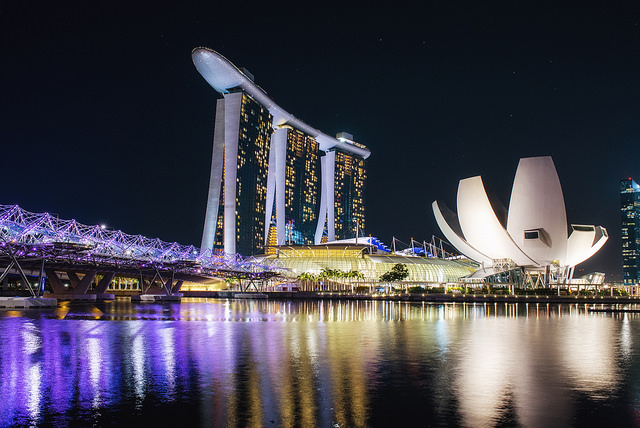Today, more than half of the world’s population lives in urbanised areas, with numbers growing all the time. A city’s biggest concern must now be that their growth is sustainable – any new developments must meet the needs of the present population without compromising the needs of future generations. This requires balancing the economic, social and environmental interests of a city; sustainability is not just about reducing CO2 emissions, but also about ensuring a strong economy and a good quality of life for future generations.
The main question, therefore, is whether enough is being done. Despite global press coverage about the constant problem of climate change, overcrowded cities and failing economies, it appears that cities around the world are actually implementing innovative schemes to improve their sustainability. Events such as the UN Special Event on Sustainable Cities, as well as the general conference of the United Nations Industrial Development Organisation have also made sure that cities remain focused on industrial efficiency and the challenges that lie ahead.
Some cities stand out in particular for the work they’ve done in becoming sustainable. One example is Lima, which has found innovative ways to cope with a population of almost 10 million people. By implementing a new Metro line that travels above the city’s traffic, people living in the most northern and southern districts can now have quick access into the city centre, reducing commuter journeys and tackling motor vehicle congestion. There is also a simple yet innovative proposal for a pedestrian bridge that will link Miraflores and Barranco, two of the busiest districts in Lima, allowing them to benefit from one another. It will also have a number of dual functions including an amphitheatre, garden, sculptures and viewpoints, helping to improve the quality of life of residents.
In Copenhagen, the city has worked hard to ensure sustainability, winning the award for European Green Capital 2014. The main thing that stands out in this city is their bike lanes; the creation of bike ‘highways’ has allowed almost 50% of commuters to travel to work by bike. Copenhagen has also promoted public transport by integrating bikes, trains and buses, allowing one ticket for all types of transport and for bikes to be taken on the trains. The city aims to be carbon neutral by 2025 and has a significant amount of wind power production in the harbour. It also uses a district cooling system that sends seawater in pipes under the buildings to cool them in the summer, reducing the need for air conditioning.
Singapore also leads the way in sustainability, winning awards for its Intelligent Transport System, which uses technology to reduce congestion, for example by sending real time traffic reports to taxis via GPS. They also have a hugely successful water purification project called NEWater. This scheme takes treated, used water and purifies it further using advanced membrane technologies and ultra-violet disinfection, making it completely safe to drink. This is especially important in Singapore, a city with a history of water shortages. In terms of waste management, the city focuses on using recycled materials when constructing new buildings and they have 4 waste-to-energy incinerators, reducing waste volume by 90%. Singapore strives to find new sustainable solutions, with a designated CleanTech Park working constantly to find new clean technology.
New York has implemented a scheme that aims for a third of all taxis to be electric by 2020. There are also rules that 20% of all new off-street parking must now be ‘charger ready’, promoting the use of electric cars in the city that never sleeps. In terms of sustainable housing, NYC has recently held an architectural competition to design new housing in small spacing with multi-purpose functions. The result has been that innovative ideas will now be put in place to provide affordable housing for New Yorkers, promoting creativity at the same time. Another project is the High Line, which transformed an old freight rail-line above the city into a beautiful high-rise park, creating green space out of an unused area.
These four cities are taking big steps to try and provide for future populations, but there are still plenty of others that need to follow their lead. Take Phoenix, Arizona for example, said by some to be the ‘least sustainable city in the world’. A city located in the middle of a desert which is slowly becoming drier due to climate change, it suffers from drought and water shortages, high CO2 levels and a population that is politically quite anti-green. Cities such as Phoenix will soon have a critical lack of housing and resources, leading to poverty and a reduction in quality of life, and must now follow the examples of Lima, Singapore, Copenhagen and New York; finding alternative energy and water supplies, and innovative housing and transport solutions, that will support future generations.
Joanna Hill
Images coutesy of Sustainable UMD, Stefano Ravalli, Leonid Yaitskiy, Fc Nikon and DocSlyper via Flickr




















